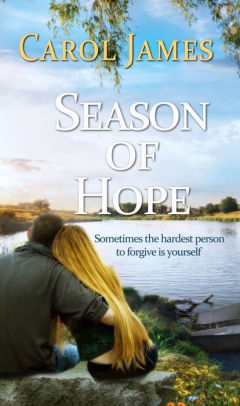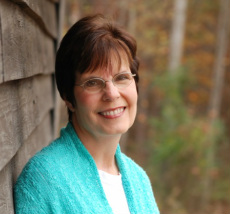The Boy Refugee
Memoir
160 pages
Published June 20th 2020 by Austin
Macauley Publishers LLC
ISBN13 - 9781645361206
$3.99 eBook
$10.95 paper
$24.95 Hardcover
Buy on Amazon
About the Book
The Boy Refugee: A Memoir from a Long-Forgotten War is the story of a young refugee boy in the aftermath of the Indo-Pakistani War of 1971. The story chronicles his escape from war-ravaged Bangladesh to the relative safety of a barbed-wired internment camp in the foothills of the Himalayas, his day-to-day life as a civilian prisoner of war, and his thousand-mile, two-year-long journey back to Pakistan.
My review
This memoir takes the reader to a not-so-distant frightening episode in world history. Told from a grown-up emigre physician’s point of view, Dr. Azimuddin shares the story of his childhood spent as an innocent bystander caught up in war in the early 1970s.
Dr. Azimuddin makes the point that this period of world history is little-discussed or taught. I was in junior high when I learned about the new country of Bangladesh erupting from the former East Pakistan; how the Pakistani people had been divided across the expanse of northern India, and how they’d grown apart, almost into separate people with their own customs, language, and culture. But, eclipsed by the atrocity that was Viet Nam, not to mention upheaval in almost every other corner of the globe, attempted genocide in this out-of-the-way region has been pretty much treated as a civil war in world history.
Tensions had been mounting for years, but by the early 1970s, Pakistani people, some of whom had migrated from west to east a hundred years earlier, living and working in East Pakistan, were suddenly cast into the role of usurpers. The Bengali people, as those who lived in East Pakistan preferred to call themselves, decided they were being treated unfairly and rose up to split from Pakistan and form the new nation of Bangladesh. People who weren’t Bengali, even if they’d lived there for generations, were attacked in a genocidal campaign, and many businesses closed. Pakistani troops were sent, and India had little choice but to get involved. Those who could, fled, leaving behind every part of their lives—home, jobs, friends and sometimes relatives, as well as their future.
Azimuddin’s father had decades earlier moved from West Pakistan and found work in a jute factory, eventually becoming a manager. The family, parents and three children, watched the growing unrest, but chose to stay until they were forced to go into hiding. They eventually found shelter in an army cantonment, then were part of a rescue operation by the Indian government that began to move refugees back toward Pakistan. When Pakistan hesitated to receive its 93,000 rescued citizens back, the Indian government set up camps across northern India and treated the refugees, both civilians and Pakistani military personnel, as Prisoners of War. It is here that Azimuddin spent two years while Pakistan hemmed and hawed about accepting its people. Meanwhile, a vast number, as many as a quarter million non-Bengalis, or Biharis, were left in Bangladesh to their fate, only recently gaining some recognition.
As a child, Azimuddin’s perception of life in the refugee camp is perhaps colored by his innocence. Imagine going from a large home with servants to take care of one’s needs to a six by eight-foot bare cement floor for your family of five, walled off by your three suitcases and sleeping bag, and a couple of sheets. You share a large area with several families, and common bathrooms for women and for men, and a common tap for water. You are fed basically gruel three times a day. You are under guard day and night, surrounded by barbed wire which, if you touch, you are punished. You long for a chance to go on wood and coal runs that, even though constitutes hard labor, is at least a chance to get outside the compound. Azimuddin recalls the experience certainly not pleasant, but not overtly harsh. Most of the Indian guards were decent folk, and though rations, warm clothing, and education were barely adequate, it was enough. Social life, faith practices, rudimentary government carried on. The older children were allowed some rudimentary volunteer education; a tiny stipend was given out to spend at the canteen, mail was available; even an opportunity to hear some basic radio news broadcasts. But the people were faced with uncertain futures if they ever were freed from the camp.
Eventually the standstill ended and Pakistan lukewarmly welcomed these POWs. Azimuddin’s father had to begin life all over, having lost everything, including pension. Dr. Azimuddin says their years of deprivation changed them, and made them tougher, perhaps better able to withstand a slow jumpstart back into the workforce. The family was in somewhat better circumstances than others, since they had outside family support, but it was no less traumatizing.
This memoir is a fascinating read, and highly recommended for those interested in under-told world events.
About the Author
Dr. Khawaja Azimuddin is a
gastro-intestinal surgeon in Houston, TX. He specializes in minimally invasive
robotic surgery for colon cancer. He is a Fellow of the American College of
Surgeons, the American Society of Colon and Rectal Surgeons, and the Royal
College of Surgeons of England and Edinburgh. Though he has authored numerous
scientific research articles, medical book chapters, and a surgical reference
book, this is his first non-scientific work. In his free time, Dr. Azimuddin is
an avid ceramic tile artist and many of his large-scale murals are installed in
public places. He uses his passion for arts to help build bridges between
communities.












